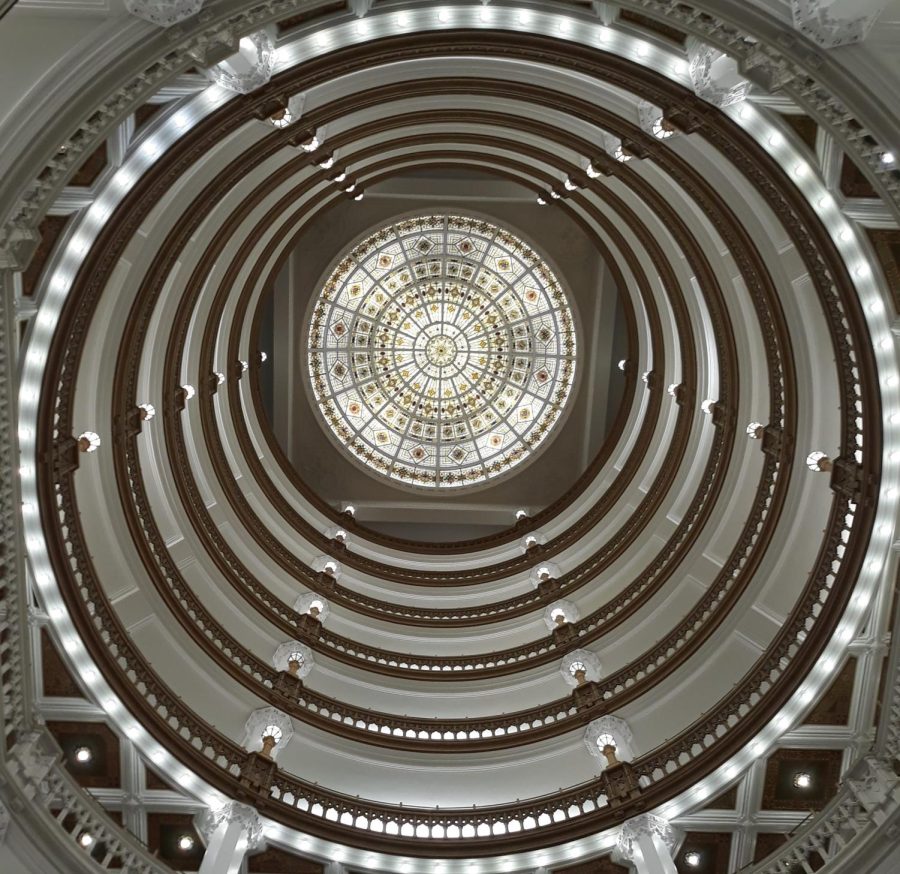Doors Open Downtown
Some Pittsburghers may go their whole lives without seeing all of the spectacular architecture in their own downtown.
Looking straight up through the atrium of the Union Trust Building is a mesmerizing sight.
February 28, 2022
Locked in by the three rivers, downtown Pittsburgh is a dense web of streets and businesses, but it is easy to overlook the history of the Golden Triangle. Any trip downtown reflects that Pittsburgh is famous for holding on to the past, with many old buildings standing alongside the modern high-rises. However, while one may have a passing desire to explore a building downtown, it may not be convenient or even allowed.
But thanks to a volunteer organization formed five years ago, Pittsburghers have finally been able to get a look inside many of downtown’s intriguing historic buildings.
Ever since beginning in 2016, Doors Open Pittsburgh has hosted an annual event in which 50-60 downtown buildings are opened to the public for self-guided exploration during a weekend in early fall. Doors Open Pittsburgh is not limited to its annual downtown event; they also conduct doors of many other neighborhoods around the city, and their programming has recently expanded to include bus tours, guided tours, and a variety of online events. More than 18,500 people have taken part in a Doors Open event since the program’s beginning.
A few years ago, I was able to take part in a Doors Open downtown tour, and the architecture remaining from so long ago is truly impressive. Pittsburgh history–and the history of much of industrial America–is still alive on Grant Street, which runs from North to South along the eastern side of downtown. In many ways, Grant Street is the boulevard of Henry Clay Frick, rival to Carnegie–he built its most extravagant buildings in the early 1900s. With medians filled with greenery and shade trees, the street has a different feel than many of the avenues downtown, and the graceful buildings add to the atmosphere.
Blue pins mark the buildings featured in this article.
Starting our tour at the far northern end of Grant Street, we stopped into the massive Union Station. Although it is now an apartment building, there is still a very small Amtrak station behind this once-bustling station. Union Station is most notable for its beautiful exterior rotunda, which includes a rare reminder of when the city was officially spelled “Pittsburg.” (From 1890-1911, the United States Board of Geographic Names dropped the “h”, supposedly for national standardization.)
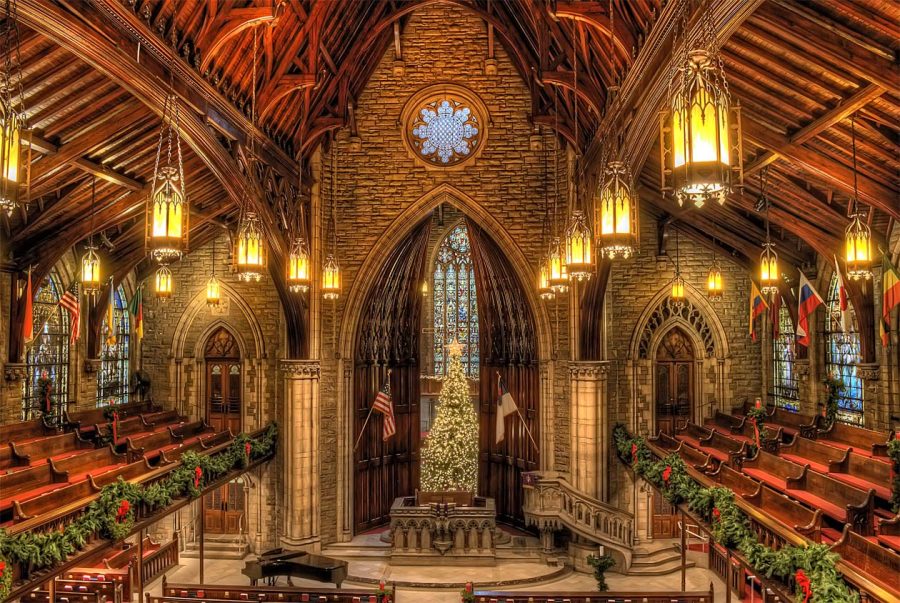
Two blocks off of Grant Street, you come to the First Presbyterian Church. Adjacent to another church known as Trinity Cathedral, First Presbyterian is an amazing work of Gothic Revival architecture, its design a unique harmony of wood and stone. Tiffany stained glass windows line the walls as well as the rear of the chapel, which is separated from the main worship hall by two 30 foot high oak doors. First Presbyterian Church is a jaw-dropping house of worship, perhaps the grandest church downtown.
Back on Grant Street, the Union Trust Building is found across the street from the stately William Penn Hotel. Built between 1915 and 1917, its intricate roofline and interior atrium– which spans ten floors–are among the most striking in the city, and after an extensive renovation, the historic design of the Union Trust Building is more beautiful than ever.
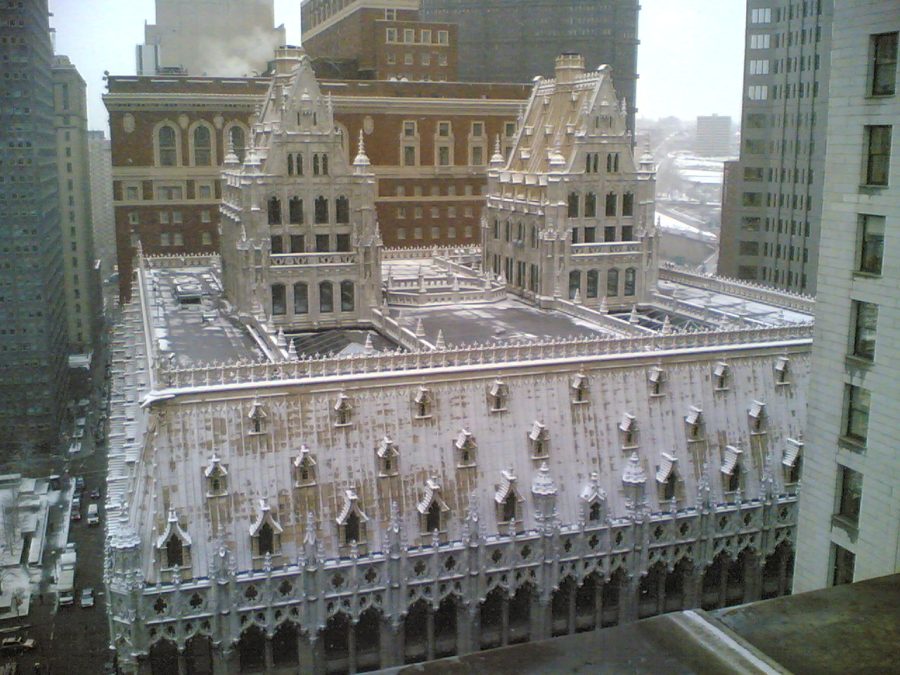
Catty-corner on Grant to the Union Trust Building, the Allegheny County Courthouse and Jail are among the finest Romanesque buildings ever created. Designed by H. H. Richardson and completed in 1888, a bridge connects the courthouse to the old jail across Ross Street. Now dwarfed by neighboring buildings, it is hard to believe that the 100’ courthouse tower was once the city’s tallest structure. If you can gain access to the interior, the courthouse’s grand staircase is a mesmerizing play in stone arches, surrounded by old mosaics.
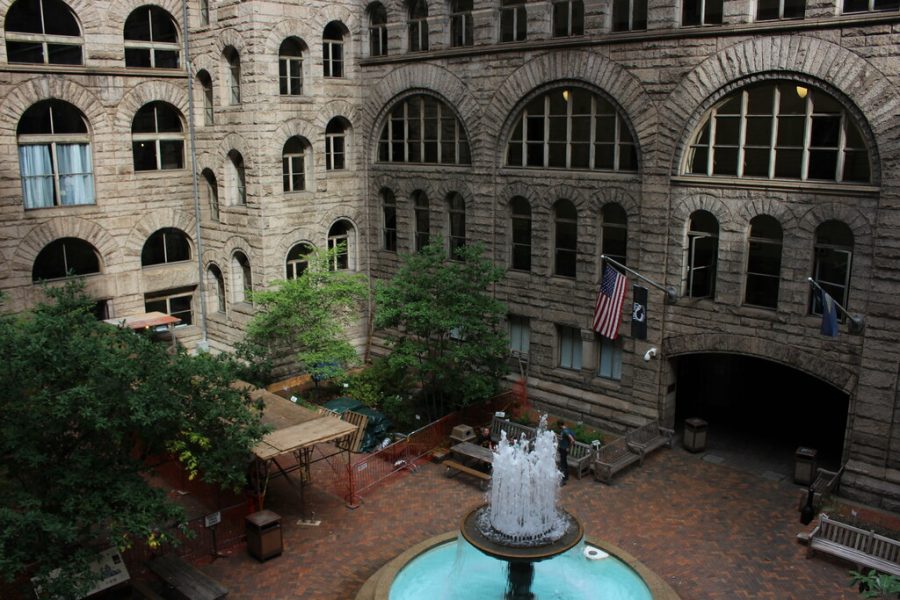
The Frick Building faces the Courthouse and has a fascinating history itself. At the time of its construction by Henry Clay Frick, it literally overshadowed the now-demolished Carnegie Building that sat adjacent to it; as Andrew Carnegie and Frick were heated rivals in the Pittsburgh steel industry, it makes one question if the Frick Building’s chosen location was a coincidence. At the time it was finished, the 330’ Frick Building took the record for downtown’s tallest building from the courthouse tower across the street.
The lobby of the Frick Building is a tangible reminder of the history of downtown. Grant Street was leveled substantially between 1911 and 1913, necessitating the alteration of many buildings, including the Frick, which had its bottom floor lowered to meet the new street level.
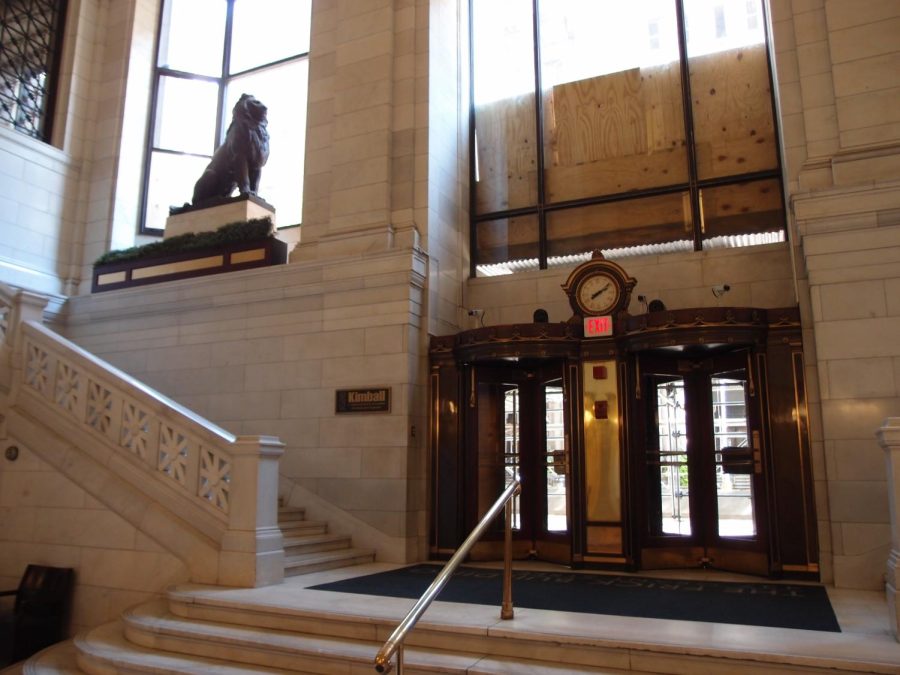
These are only a few of the buildings I visited during the Doors Open Pittsburgh downtown tour, but old architecture is definitely one of the things that makes downtown a special place. And even if some currently serve different purposes, all these buildings are just as functional today as when they were built. The city’s old buildings are often overshadowed, yet there is much to appreciate in their architecture alone. If you know where to look, you’ll realize that above anywhere else, the history of Pittsburgh is truly alive and well downtown.


